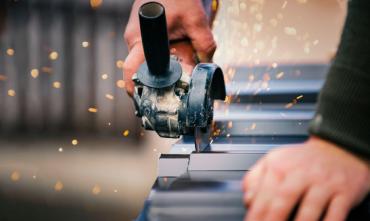
Aluminium is a versatile metal that has been used for centuries in various industries, including construction, transportation, and manufacturing. It is lightweight, corrosion-resistant, and easily recyclable, making it an ideal material for a wide range of applications.
However, the process of fabricating aluminium into usable products has evolved over the years to meet the changing demands of different industries. In this article, we will explore some of the latest advancements in techniques followed by aluminium fabrication companies in Dubai.
Computer-Aided Design (CAD) and Computer-Aided Manufacturing (CAM)
The use of CAD software has revolutionized the way aluminium products are designed. This computer-based tool allows engineers to create highly detailed 3D models of their designs, making it easier to visualize and test them before beginning the fabrication process. This not only saves time and money but also ensures a high level of precision in the final product.
Additionally, CAM software is used to program CNC machines, which automate the fabrication process. By using precise cutting instructions from CAD drawings, CNC machines can produce complex aluminium parts with minimal human intervention. This has greatly increased production efficiency and accuracy in the fabrication industry.
Advanced Forming Techniques
Traditionally, aluminium was shaped through processes such as bending, stretching, and rolling. However, advancements in forming techniques have expanded the possibilities for shaping aluminium into more complex and intricate designs. Some of these techniques include:
- Hydroforming: This technique uses high-pressure fluid to shape the aluminium sheet or tube into a desired form without altering its thickness.
- Superplastic Forming: By heating the aluminium sheet to a high temperature, it becomes extremely malleable and can be formed into complex shapes with minimal force.
- Incremental Sheet Forming: This process involves using a tool to incrementally shape small sections of the aluminium sheet until the desired form is achieved. It allows for greater flexibility and control in shaping intricate designs.
These advanced forming techniques have revolutionized the way aluminium products are designed and fabricated. They offer more creative possibilities for designers while also improving the strength and durability of the final product.
Sustainable Production
Apart from its versatile properties, aluminium is also known for its sustainability. It is 100% recyclable, meaning it can be melted down and reused again and again without losing its strength or quality. In fact, recycling aluminium requires only 5% of the energy needed to produce new aluminium from scratch.
Moreover, using recycled aluminium significantly reduces carbon emissions and helps conserve natural resources such as bauxite, which is the primary source of aluminium. As a result, many industries are now focused on incorporating sustainable practices in their production processes by utilizing recycled aluminium in their products.

